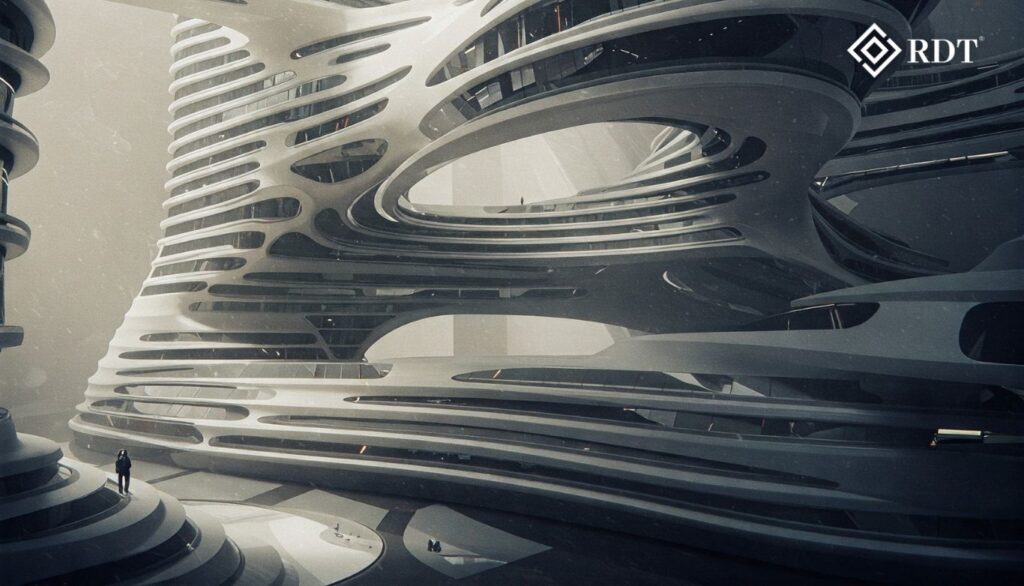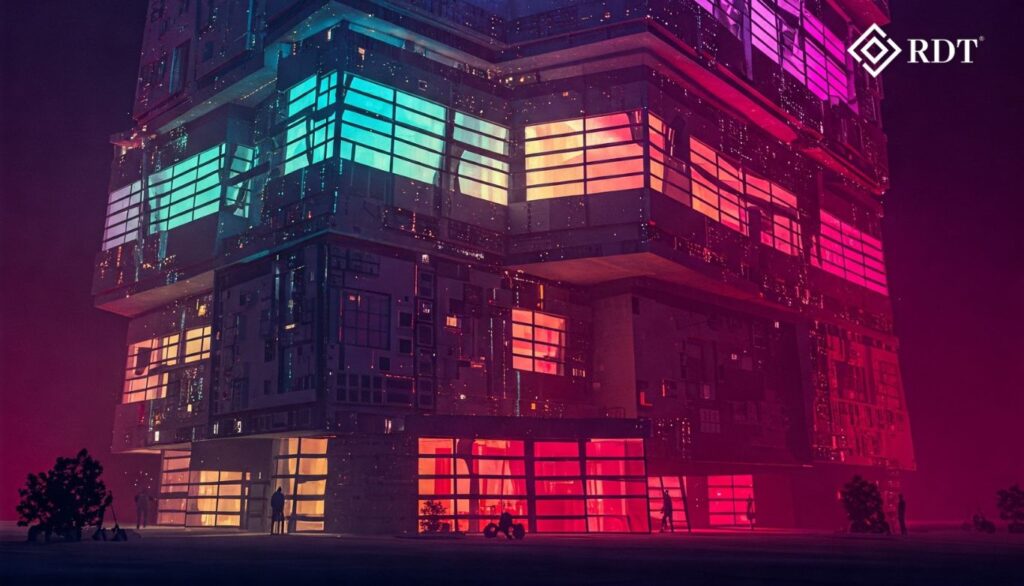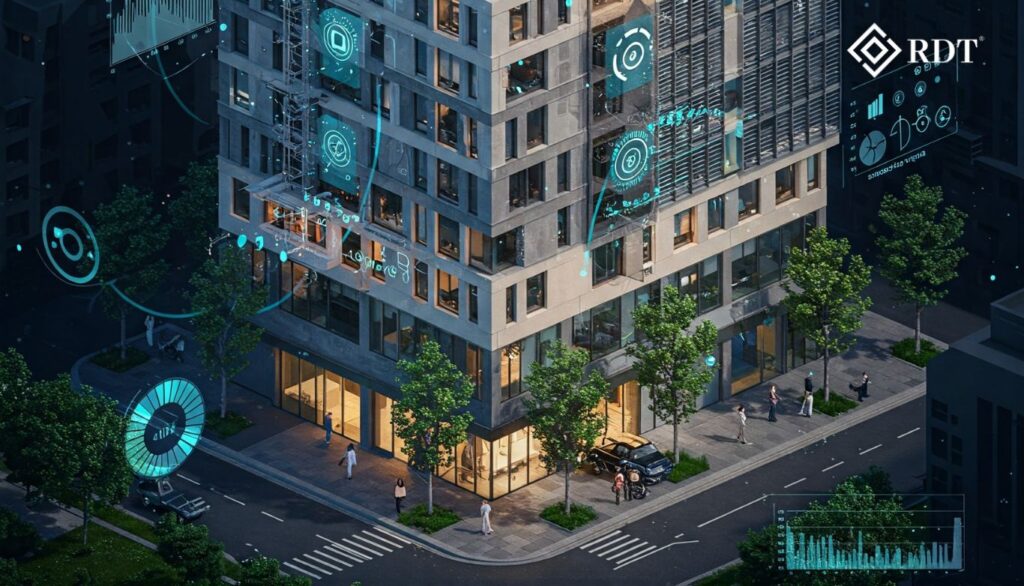In the fast-evolving landscape of architectural design and construction management, Artificial Intelligence (AI) has transcended traditional paradigms. For enterprise-level architects and AEC (Architecture, Engineering, and Construction) professionals, AI is no longer a futuristic concept — it is a foundational tool driving efficiency, accuracy, and innovation.
With AI-driven platforms integrated into Building Information Modeling (BIM) ecosystems, architectural firms now harness predictive analytics, automated design generation, real-time error detection, and intelligent documentation management. This blog explores how AI is reshaping the architectural workflow, focusing on cutting-edge applications for experienced practitioners.
1. AI-Powered Generative Design: Evolving Beyond Conventional Design Approaches

Generative AI has emerged as a pivotal advancement in architectural design. Unlike traditional CAD software, AI systems utilize reinforcement learning and genetic algorithms to explore thousands of design permutations, optimizing for structural performance, sustainability, and aesthetic appeal.
Key Mechanisms Driving Generative AI
- Multi-Objective Optimization (MOO): AI models evaluate multiple conflicting objectives (e.g., material use vs. structural stability) using Pareto Front solutions. Tools like Autodesk Forma and TestFit implement MOO for rapid urban planning and architectural massing studies.
- Topology Optimization: AI analyzes load distribution using Finite Element Analysis (FEA) to remove unnecessary material, generating structurally efficient forms.
- Convolutional Neural Networks (CNNs): AI vision models analyze precedent designs to predict contextual suitability and recommend material choices.
Real-World Application
An enterprise project can apply reinforcement learning agents to simulate daylight optimization. By analyzing climate data, the AI proposes façade designs that maximize natural lighting while minimizing glare and heat gain.
2. AI-Enhanced BIM: Bridging the Gap Between Design and Construction Documentation
AI-driven BIM platforms automate the generation and validation of construction documents. Through deep learning models, AI reduces human errors and ensures accuracy across extensive datasets.
AI in Model Validation and Clash Detection
- Graph Neural Networks (GNNs): GNN-based systems, like those used in Navisworks Manage, detect structural clashes by analyzing spatial relationships within BIM models.
- Natural Language Processing (NLP): NLP algorithms interpret construction notes and project specifications, cross-referencing them with BIM data to detect inconsistencies.
- Visual Similarity Analysis: AI compares 2D and 3D models using Siamese Networks to ensure alignment between drawings and on-site conditions.
Automated Construction Documentation Generation
- Rule-Based AI Engines: Tools such as Revit Dynamo use AI algorithms to auto-generate elevations, sections, and schedules from 3D BIM models.
- GAN-Based Rendering: Generative Adversarial Networks (GANs) produce photorealistic renderings by enhancing textures, shadows, and environmental effects.
- Intelligent Parametric Annotation: AI tags mechanical, electrical, and plumbing (MEP) systems with accurate parameters, streamlining coordination.
3. Predictive Design Analytics with AI for Enhanced Decision-Making

AI empowers architects to make data-driven design decisions through predictive modeling. By applying historical data, AI algorithms identify patterns that enhance spatial efficiency, energy optimization, and material performance.
Predictive Models for Design Optimization
- Bayesian Neural Networks (BNNs): These probabilistic AI models predict construction outcomes by simulating uncertainties in material behavior and structural performance.
- Generative Energy Models: AI-driven energy modeling platforms like IES VE predict operational energy consumption using Monte Carlo simulations.
- Agent-Based Simulations (ABS): AI analyzes how users interact with spaces, optimizing wayfinding, emergency evacuation routes, and acoustic comfort.
Example Use Case
In a high-rise office project, BNN models can predict the effects of façade material choices on thermal performance. The AI suggests alternative materials to reduce heat gain while maintaining aesthetics.
4. AI-Powered Quality Control and Error Detection
Quality assurance in large-scale construction requires computer vision and anomaly detection algorithms to ensure accuracy across thousands of construction elements.
Computer Vision for Site Monitoring
- Semantic Segmentation Networks: AI systems using UNet or Mask R-CNN segment visual data from drone-captured images, identifying structural elements and detecting deviations from design models.
- Pose Estimation Models: AI analyzes worker posture and equipment usage on-site to ensure compliance with safety protocols.
- 4D Progress Monitoring: Integrating AI with BIM and time-lapse photography allows for real-time construction progress monitoring and comparison against schedules.
AI for Document Anomaly Detection
- Transformers and BERT Models: NLP algorithms analyze text-heavy construction documents, identifying conflicts between specifications, RFI (Request for Information) responses, and change orders.
- AI-Driven Compliance Checking: Regulatory AI models cross-check documentation against local building codes and zoning regulations to flag non-compliance risks.
5. AI and Digital Twins: Real-Time Design Adaptation

AI-powered Digital Twins are transforming how architects monitor and optimize building performance post-construction. By continuously syncing with real-world sensor data, Digital Twins simulate various operational scenarios to recommend design adjustments.
Key AI Capabilities in Digital Twins
- Reinforcement Learning for Adaptive Control: AI algorithms autonomously adjust HVAC, lighting, and shading systems based on occupancy patterns.
- Predictive Maintenance with LSTM Networks: Long Short-Term Memory (LSTM) models predict equipment failure based on sensor data.
- Behavioral Analysis with AI: Digital Twins use AI to analyze occupant movement, suggesting workspace reconfigurations for enhanced productivity.
✅ Conclusion
AI is no longer a peripheral tool in architectural design and construction — it is a core enabler of efficiency and innovation. Through advanced AI algorithms, BIM integrations, and Digital Twins, architects can predict and resolve design challenges long before construction begins. Experienced architects can unlock unprecedented precision, sustainability, and operational control in their projects.
The future of architectural design and construction documentation is already here. Will your firm embrace it?





